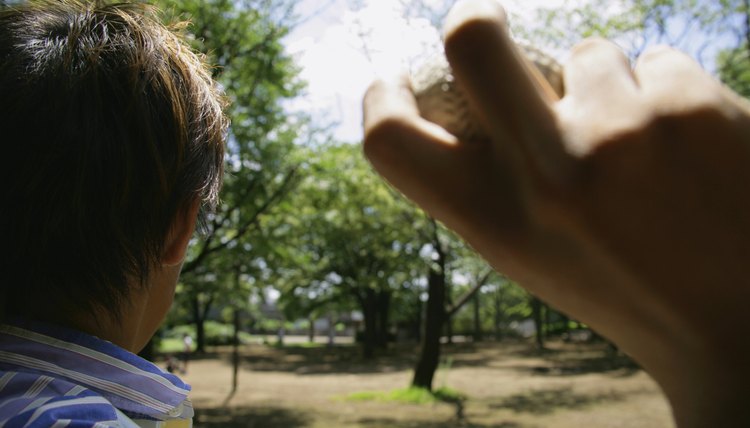A Pain in the Right Abdomen Under the Ribs When Throwing a Baseball

The pain you’re feeling just under the ribs along the right abdomen is likely caused by muscle strain. Most of the time, abdominal strains occur within the rectus abdominis muscles, the pair of muscles that run along the anterior wall of your abdomen. The trunk rotation often required to throw a baseball, however, can sometimes lead to strain of the oblique muscles, which run along either side of the rectus abdominis muscles. Talk to a doctor to determine the exact source of your pain.
Muscle Strain
During wind-up, you rotate your trunk and bring your arm back, which stretches the abdominal muscles. As you throw the ball, you reverse the movement, and the oblique muscles along the throwing-arm side of your body suddenly contract. If the rotational force is greater than your muscles can withstand, the contraction can contribute to muscle strain.
Symptoms
Pain is by far the most common symptom of an abdominal strain. It’s often localized in the area of the strain. You usually feel pain in the obliques under or along your ribs. You may also notice some mild tenderness and swelling. Movement worsens the pain -- even sneezing, coughing or breathing.
Severity
Muscle strains can range in severity. Mild strains are simply muscles that have extended further than their normal capacity, whereas moderate strains may result from small tears in the muscular fibers. With severe strains, your muscle may become ruptured, or torn completely.
Recommendation
If you feel pain under your ribs while throwing a baseball, it's a good indication that you should rest. Ice the affected area for 10 to 15 minutes, several times throughout the day. Icing draws blood away from the injury site, lessens inflammation and alleviates pain. You may also want to wrap the abdominals to further minimize inflammation. Contact a doctor or sports physician to take a look at the injury and determine the best plan for treatment.
If your strain is mild or moderate, your treatment may involve rest for a period of time, followed by stretching and strengthening exercises to rehabilitate your body. If it's severe, you may need more extensive care. In this situation, you may need a surgical procedure to repair the torn muscle.
References
Writer Bio
Based in Minneapolis, Minn., Dana Severson has been writing marketing materials for small-to-mid-sized businesses since 2005. Prior to this, Severson worked as a manager of business development for a marketing company, developing targeted marketing campaigns for Big G, Betty Crocker and Pillsbury, among others.
